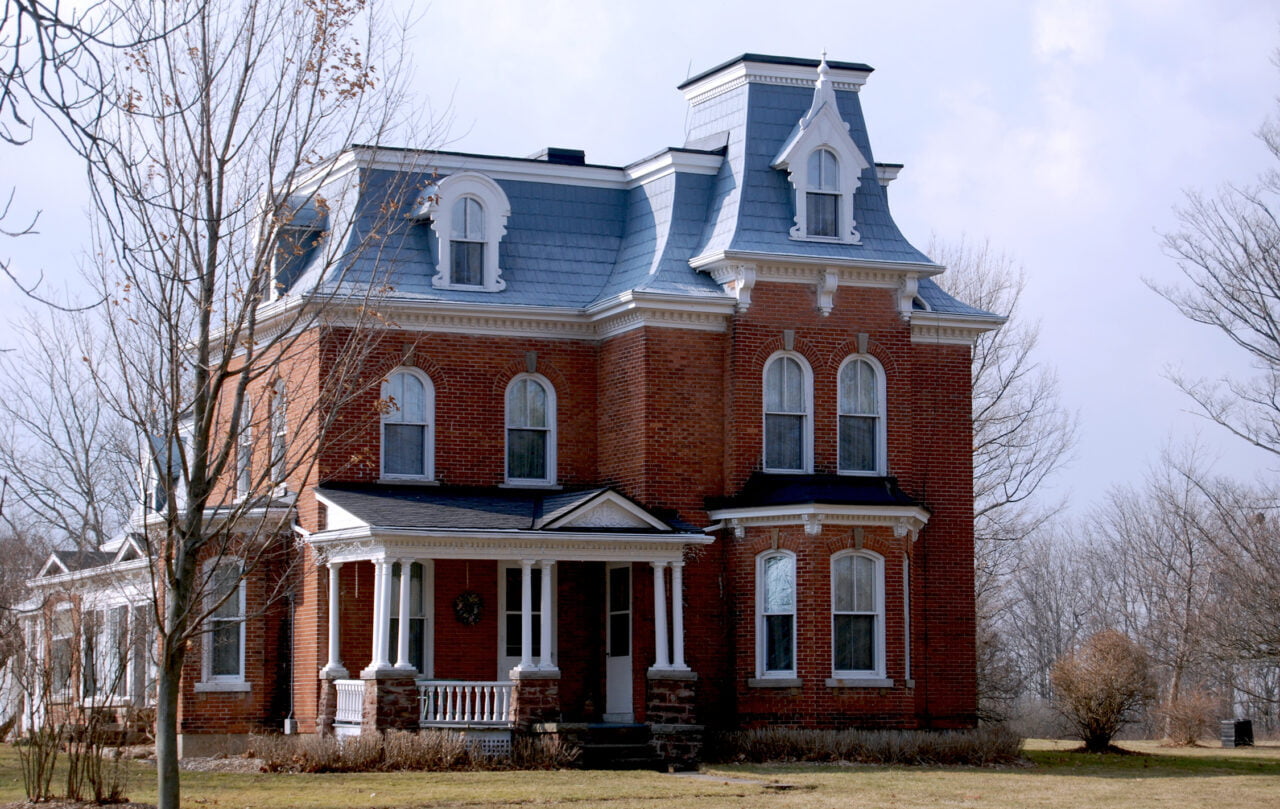 Reviewed by
Bogdan Profir
Reviewed by
Bogdan Profir
Mansard roofs—also known as French or curb roofs—are a hallmark of classical European architecture, blending elegance with practicality. Characterized by their dual-slope design on all four sides, these roofs maximize upper-level space while adding distinct visual identity to both historical and modern structures. Originating in the 16th century and popularized in 17th-century France, the mansard roof remains a timeless choice for architects and designers looking to create dramatic rooflines, usable attic spaces, and vertically expressive facades. In this guide, we explore everything about mansard roofs—from structural features and historical roots to modern applications, design considerations, and roofing material options.

What is a Mansard Roof?
Definition of Mansard Roof
In technical terms, a Mansard roof can be described as a four-sided hip-style gambrel roof. A traditional gambrel roof consists of two sides, each with two slopes—the lower slope being significantly steeper than the upper. Meanwhile, a hip roof has gentle, uniform slopes on all four sides that extend downward to the walls, resembling a tent-like structure. When these two roofing principles are combined—featuring four sides with dual slopes, where the upper slope is shallow and the lower slope is steep—the result is the Mansard roof.
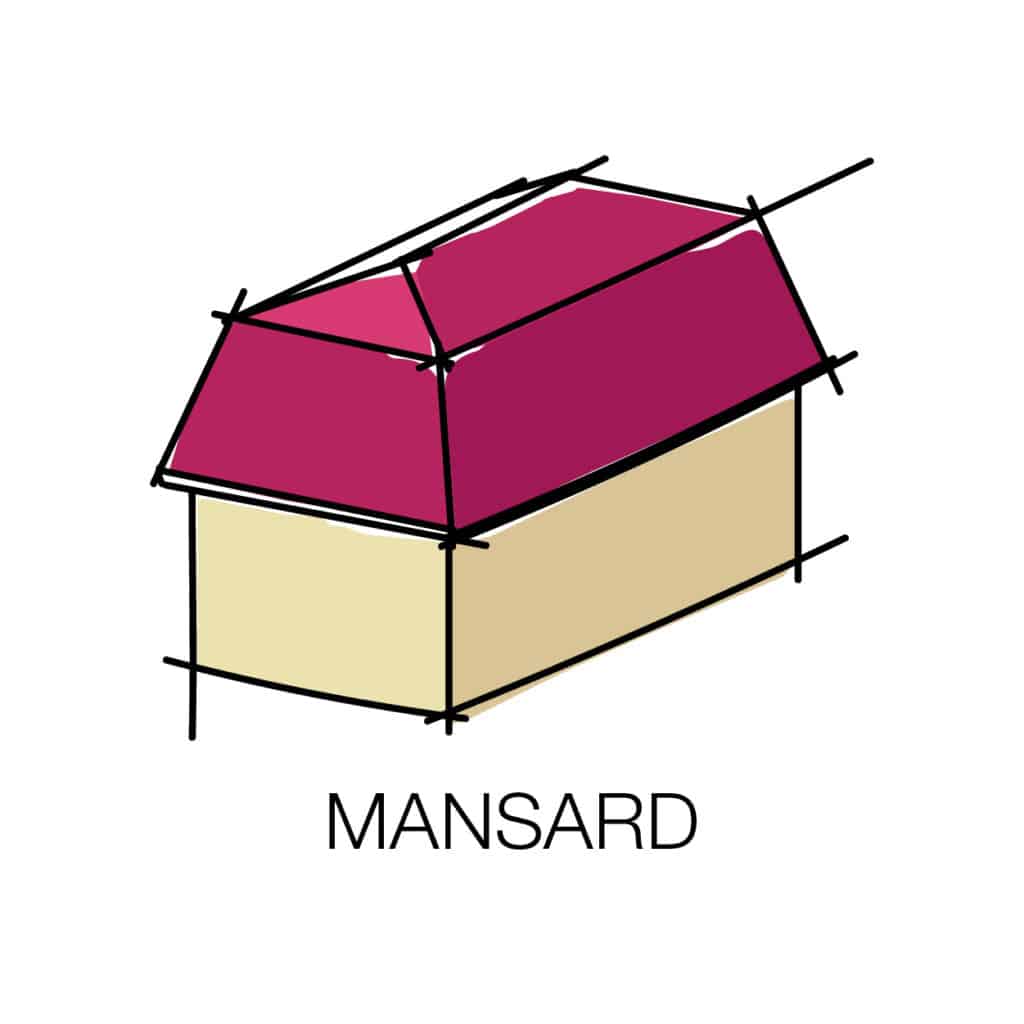
The upper slope of a Mansard roof is typically not visible from the ground due to its flat or shallow angle, while the steep lower slope maximizes usable space beneath the roofline. Dormer windows are often incorporated into the lower slope—similar to traditional gambrel roof architecture—creating habitable upper stories or attic areas, commonly referred to as garrets. Mansard roofs can vary in form, including straight, concave, or convex profiles, offering both structural flexibility and visual variety.
Although commonly associated with barn-style buildings, the Mansard roof design is not limited to rural architecture. In both Germany and France, the terms Mansard and gambrel are often used interchangeably, with the Mansard roof being widely recognized for its classical elegance and efficient space usage.
There are two primary design styles of Mansard roofs: the steep-sided style and the double-pitched style. The key distinction between the two lies in how they manage drainage. Steeper and longer slopes tend to offer more effective drainage of water and snow. The double-pitched version, while less aggressive in slope, still provides reliable drainage performance while maintaining a more subdued visual profile.
Traditionally, slate tiles and wooden shingles have been the materials of choice for Mansard roofs. These options appeal to those who prefer historic authenticity and textural richness. However, alternative materials such as zinc, copper shingles, and asphalt shingles are also used today to improve durability and reduce maintenance costs. For steep portions of the roof, metals like copper and zinc are especially effective. When using asphalt shingles, it's important to apply them in a consistent pattern to maintain water resistance and aesthetic cohesion.
Interestingly, the Mansard design isn’t limited to buildings alone. Its space-maximizing geometry has also been used in locomotive architecture, providing additional storage or headroom. Examples include the Australian Commonwealth Railways CL class and two Victorian Railways hopper wagons, both of which featured Mansard-style roof elements for practical utility.
For broader context and comparisons with other roof configurations, you can explore this complete guide to roof types, which highlights how Mansard roofs align with or differ from hip, gable, shed, and more.
History of the Mansard Roof
The Mansard roof was popularized by renowned French architect François Mansart (1598–1666), who employed this distinctive style extensively during the Baroque period (1600–1750). He applied it to numerous townhouses and châteaux, where its blend of structural practicality and ornamental grace quickly gained admiration. The term Mansard refers not only to the roof’s form—two slopes on all four sides with a steeper lower slope—but also to the inhabitable attic space beneath it.
However, François Mansart was not the first to conceive of this style. The original use is credited to Pierre Lescot (1510–1578), who implemented the design in 1550 during his work on the Louvre Museum in Paris—now the world’s largest art museum. The roof’s utility and elegance led to its resurgence during the Second Empire (1852–1870) under Napoleon III, when it became a dominant architectural element across Parisian boulevards during the city’s extensive reconstruction.
The style's popularity soon transcended France. It spread across England, Italy, and much of Europe, eventually reaching North America. In Canada and the United States, Mansard roofs were frequently used in Victorian-style mansions and urban townhomes, appreciated for their expandable attic spaces and ease of roof repair, especially in areas prone to hail damage.
Though less common in recent contemporary architecture, Mansard roofs are still found in select modern homes and commercial structures. Their enduring appeal lies in their ability to provide additional living space, thermal efficiency, and distinctive curb appeal—all within a relatively compact footprint. Moreover, the steep lower slope is advantageous in snow-prone climates, allowing snow to shed quickly and reducing structural load.


Mansard Roof Advantages
-
Extra Usable Space. The Mansard roof design offers exceptional flexibility when it comes to expanding upward. Its steep lower slopes and nearly flat upper slopes create room for full-height attics, additional stories, or spacious master suites, without extensive additional support or masonry. Compared to gable or hip roofs, a Mansard allows much more habitable space under the roofline.
-
Versatile in Rural and Urban Environments. Suitable for both countryside estates and tight urban lots, Mansard roofs are particularly advantageous in urban settings where expanding outward is not feasible. Their upward expansion capability makes them a smart architectural solution for space-constrained sites.
-
Increased Natural Light and Better Heat Distribution. Dormer windows, a signature feature of Mansard designs, span the length of the lower slope. These windows allow ample natural light to flood the interior while enhancing heat distribution throughout the upper floors, leading to improved comfort and energy efficiency.
-
Elegant Architectural Appeal. A Mansard roof adds a high-class, French-inspired aesthetic, rooted in Renaissance and Baroque architecture. Today’s builders incorporate modern insulation, lightweight materials, and durable finishes to retain this elegance while improving lifespan. Compared to older Mansard constructions, modern versions are more resistant to rust and structural degradation.
-
Long-Term Cost Savings. Though Mansard roofs have a higher upfront installation cost, they offer long-term savings by eliminating the need to build new structures for added space. Their superior heat distribution lowers energy bills, and the use of durable materials like metal shingles enhances lifespan. In essence, they provide greater value per square foot over time.
Mansard Roof Disadvantages
-
Potential Legal and Zoning Restrictions. In some regions, Mansard roofs are subject to special permitting, height restrictions, or square footage-based taxation, since they technically add to a building’s floor area. It’s essential to review local building codes before committing to this style. You can also compare this with other roof types to weigh your zoning limitations accordingly.
-
Higher Installation Costs and Time Investment. Due to the complex geometry and multiple slopes, Mansard roofs require skilled labor and extended construction timelines. This complexity leads to higher installation costs, especially if premium materials like metal shingles are used. While the investment pays off long term, it may be a barrier for budget-conscious homeowners.
-
Lower Resistance to Harsh Weather. The flatter upper slope makes Mansard roofs less ideal for heavy rainfall or snow-prone climates. Water and snow can accumulate, potentially causing leaks, dampness, or even structural damage if not maintained. Homeowners in such regions must remain vigilant during storms or heavy snowfall.
-
High Maintenance Requirements. Mansard roofs require frequent inspection and maintenance due to their layered structure and exposure. Debris often collects on the upper slope, increasing the risk of long-term water damage. The dormer windows, while visually appealing, are prone to leaks and structural issues if neglected, resulting in higher repair and energy costs over time.
The protruding design of the dormer windows causes more exposure to the environment, so they will often require maintenance. They are prone to develop structural problems or damage if neglected. This will add to increased maintenance costs and will become a burden on your energy costs as well if you have faulty dormer windows.
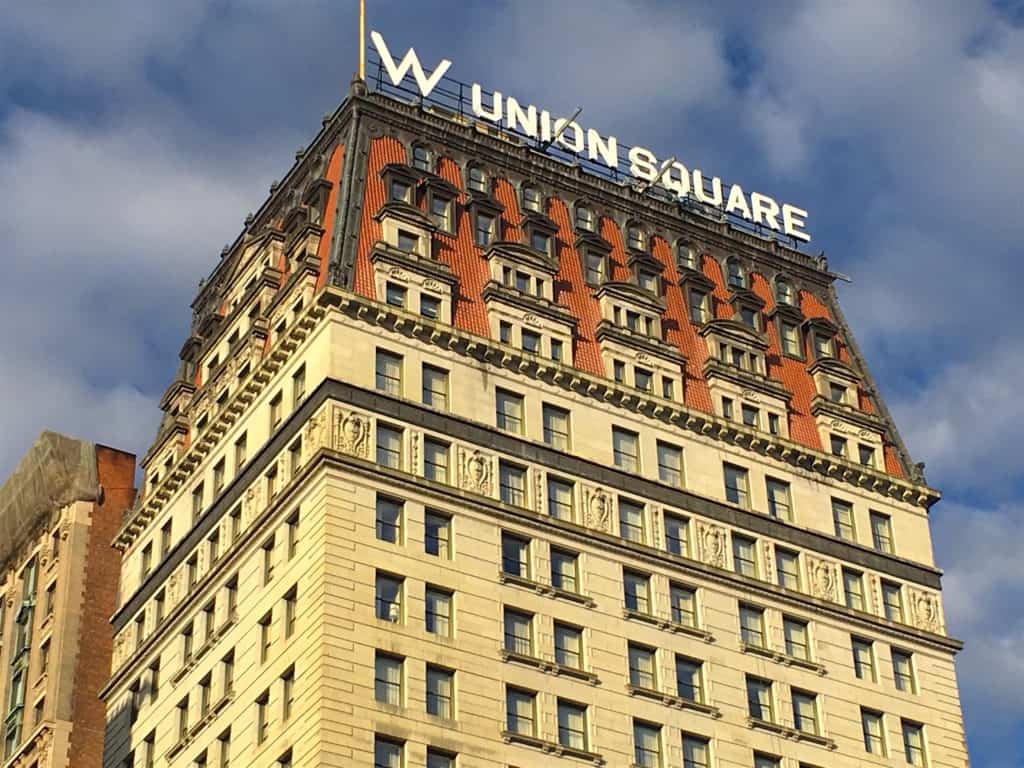
Mansard Roof vs Gambrel Roof
Many people confuse the mansard roof type with the gambrel roof type; however, these two roof types have distinctive features that you can recognize when you look closely. Gambrel roof architecture is a version of a gable roof, but the gambrel roof has two slopes on each side, rather than the one slope on a typical gable roof.
This style of roofing is not common on homes, but you can see it on barn houses and on Scandinavian design homes occasionally.
A mansard roof is a hipped roof, similar to the gambrel roof in that it has two angles on each side, but it has a roof on all four sides of the house, rather than just two, like a gambrel roof.
Types of Mansard Roofs
Four main types of mansard roof designs are commonly used:
- Straight mansard roof - This type of mansard roof has a nearly vertical lower slope and a smaller upper slope that may not be visible from ground level. Dormer windows are often added to provide natural light and ventilation to the upper floor.
- Convex mansard roof - With this style of mansard roof, the lower slope curves outward, resembling the shape and curvature of a bell. This design provides extra space in the attic rooms, which makes the interior space feel airier and cozier too.
- Concave mansard roof - This French Roof type features a flat upper slope and a steeper lower slope that curves inward, and thus it doesn't offer as much space as other mansard styles. Regardless, it has a rich architectural history and was commonly used in historic mansions and heritage buildings.
- S-shaped mansard roof: This roof style combines the convex and concave roof lines, starting with a curve inward and finishing with a curve outward.
Mansard Roofs Design Considerations
Types of shingles on the Mansard roof
Roofing materials are different from house to house, but mansard roofs require a specific type of roofing material due to their slope and exposure to harsh weather conditions. Waterproofing needs on this type of roof are extremely important, and a bit more difficult to create a tight seal between shingles on steep surfaces.
Traditionally, mansard roofs were covered with slate tiles, which could be precisely positioned by the roofer to facilitate water drainage and also provide an aesthetically pleasing look. Thanks to the advancement of manufacturing technology, in recent years, synthetic shingles or lightweight wooden options like cedar shakes have gained popularity thanks to their reduced weight and resistance to sliding down the roof over time.
Asphalt shingles or metal tiles are options as well, but although they may be cost-effective, some experts caution that asphalt shingles may be too heavy for a mansard roof's slope.
Climate
Mansard roofs are ideal for areas with cooler climates as they allow for extra insulation and boost extra protection against the elements, but are not ideal for extreme conditions with a lot of rainfall and snow, as the flat portion at the top can cause water infiltration issues.
The extra attic space and the slope of a mansard roof can help keep a building warm in the winter and cool in the summer.
Building Height
The height of the building is an important factor when considering a mansard roof. The roof’s steep pitch will require a taller building for it to look aesthetically pleasing, but it also maximizes the interior space of the building.
The extra height provides more usable space inside the building, as the slanted walls of the mansard roof provide additional storage and living space. This aspect is the driving factor behind the popularity of the mansard roof since its inception.
Cost
Mansard roofs are more expensive than traditional roofs due to the extra materials required for their construction, such as additional insulation. The labor costs associated with building a mansard roof can also be higher than those for a regular roof, but so is the interior space obtained. The extra height of the building necessary for a mansard roof will also add to the overall cost, but it maximizes the interior space without changing the building footprint.
Homes with Mansard Roofs
The mansard roof type stands out from all other roofing styles due to its regal beauty and unique aesthetics, and brings to the table the potential for more interior space.
We have gathered some stunning photos of mansard roofs, both outside and inside, to exemplify that mansard roofs have an elegant, familiar look worth considering, cast a glance.
Mansard Roof Exteriors
A mansard roof is easily identifiable due to its distinctive design and iconic look. The mansard-style roof has been around for centuries and is still popular today, appearing on both old and new buildings. Let's take a look at some examples.
Concave mansard roof
A large historic home built in red brick cladding stands tall. A front porch, bay windows, and a splendid blue metal roof add to the charismatic home above, showcasing its concave mansard roof. Several large windows bring natural light into the loft area of the concave French roof.
Straight mansard roof
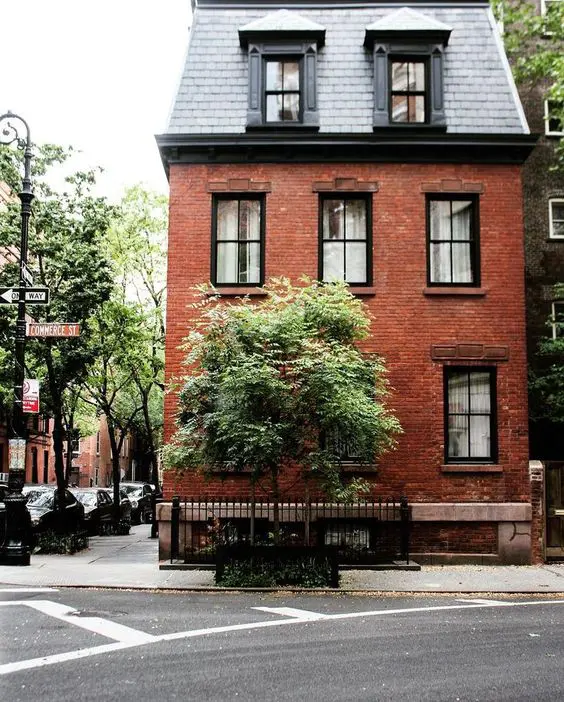
Another red brick urban home, now with a straight mansard roof featuring grey shingles, the straight mansard roof featured on this modern townhouse has a small upper slope not visible from the street level. This mansard roof, one could argue, misses the historic charm but it's an extremely fitting roof style for a modern home, one that many architects are embracing today.
Convex mansard roof
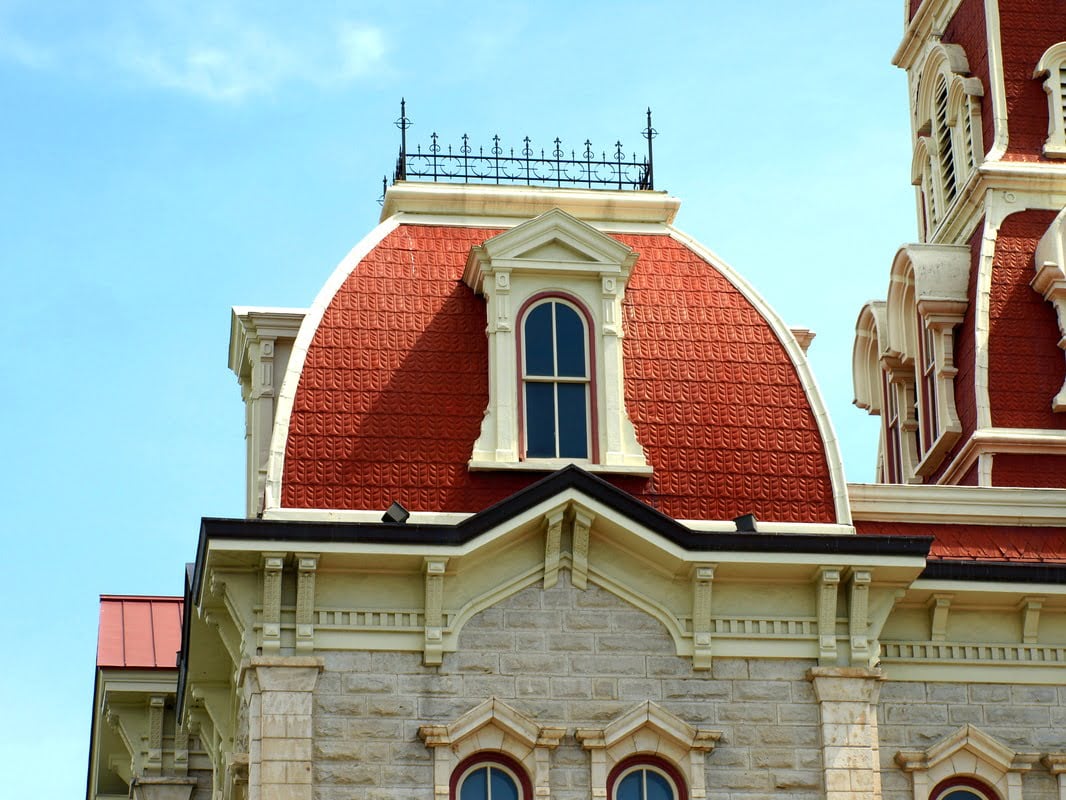
A rounded mansard-style roof is an example of how architectural design changes the built environment, a simple curvature adds extra space in comparison with a straight roof, and is embellished greatly with roundness.
via civiconcepts
Modern mansard roofs
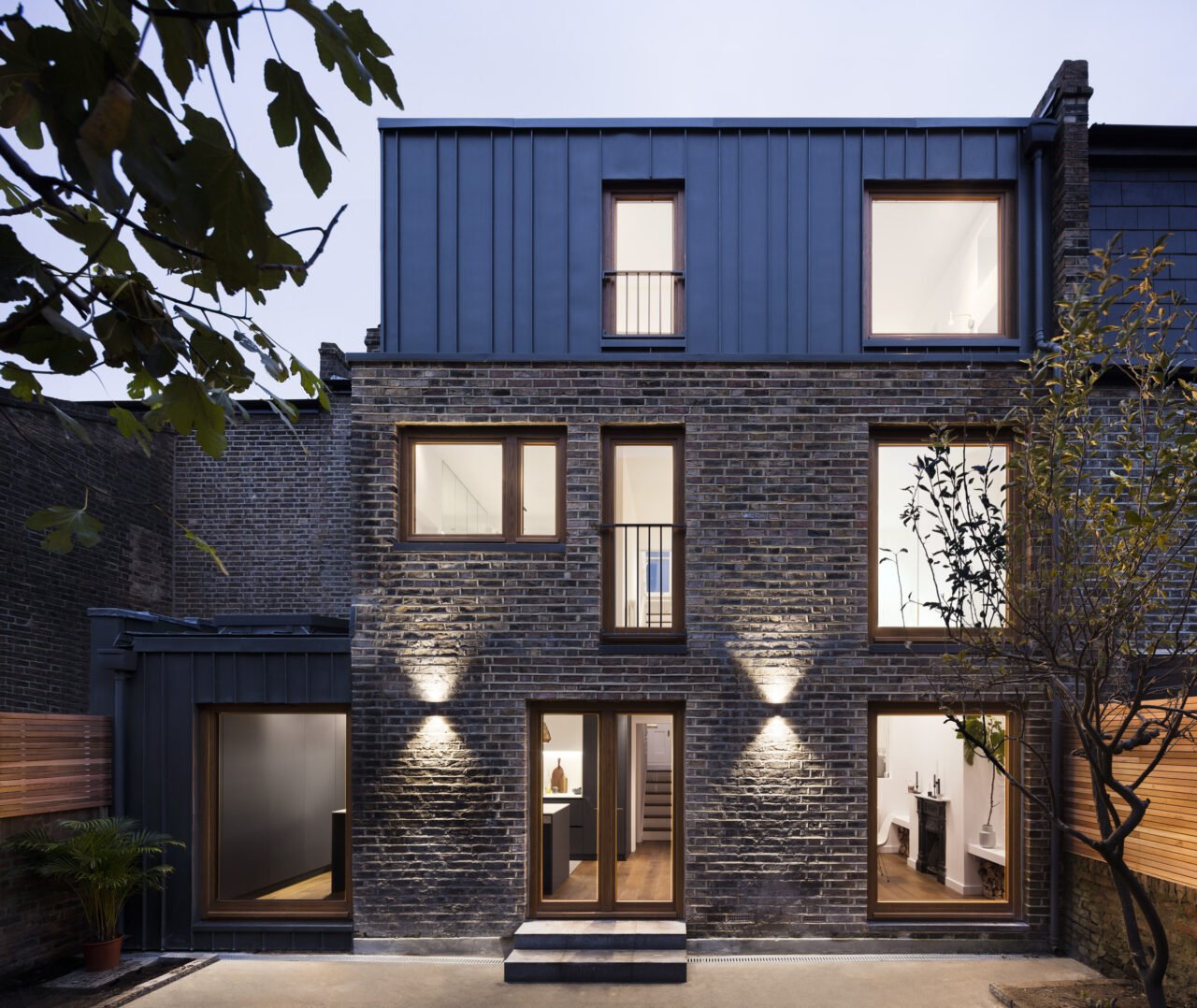
Copyright ©Rory Gardiner 2017
To say that mansard roofs are not used that much anymore is not an understatement, but the historic style still is extraordinarily present in heritage sites and is popular still in Europe, where square footage is more expensive and the cost of a single mansard might be lower than a regular roof.
In the example above, the straight mansard roof with gray metal slats allows the addition of rather large windows and creates linearity in the vertical plane, greatly emphasizing the windows below through the contrast of the metal sheets whilst complementing them with the window proportions.
Mansard Interiors
Mansard roofs have come into existence to boost interior spaces, and here they are today, doing just that. When you add a mansard roof, you encounter advantages and disadvantages,s but you certainly gain additional living space that can be anything, from storage to artist studios, you name it.
Mountain chalet with mansard roof

Copyright © Tomas Soucek
In this Chalet in Krkonoše designed by Znameni Ctyr Architekti, small bedrooms can be found on the higher levels, most of which are attics and mansard roofs. These bedrooms receive natural lighting through smaller windows in the gables and dormer windows, while technical windows in stone pedestal walls complete the overall look.
Office in an upper loft
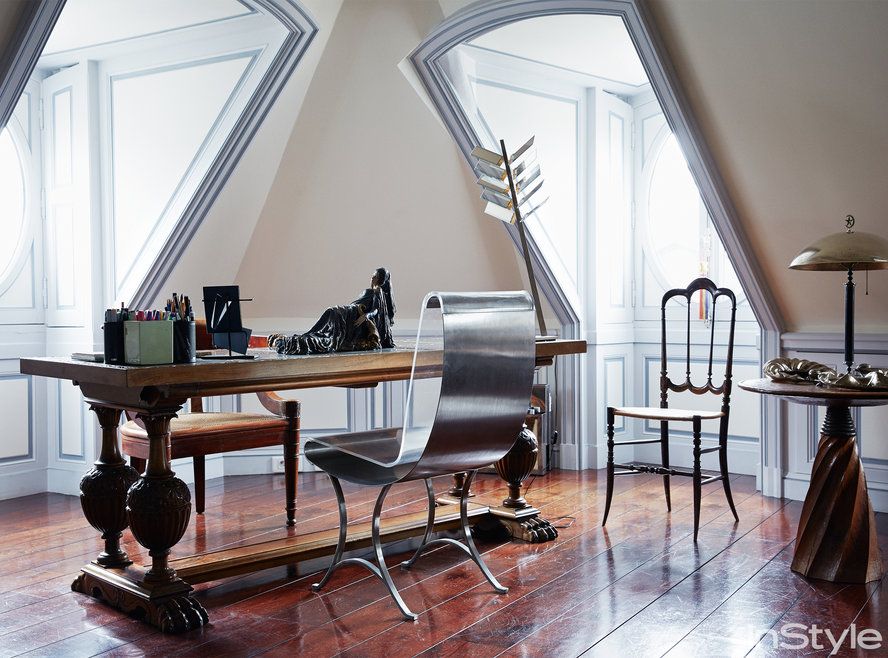
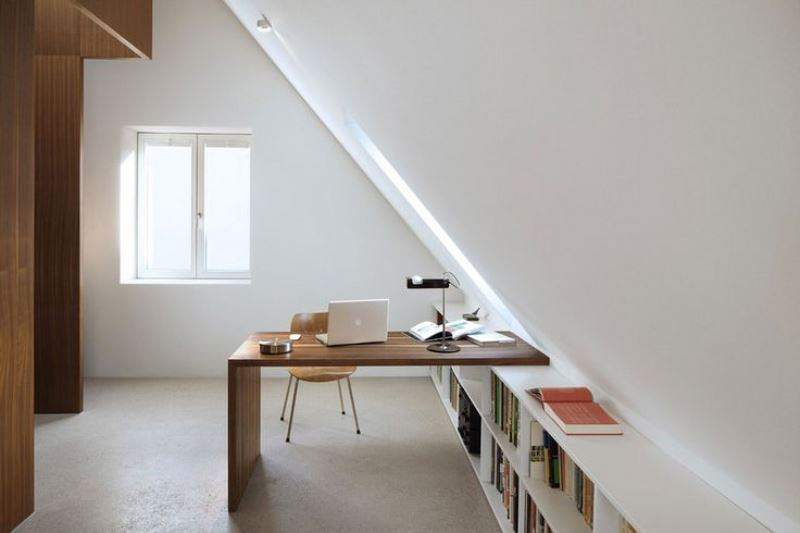
via InStyle
These days, a single mansard roof space can become an open space office, as people often take advantage of the extra square footage to create a sensible, secluded workspace. The flat roof can be fitted with large skylights, making this space incredibly bright and perfect for pretty much anything.
Benefits of Installing a Mansard Roof
The French roofs, or Curb roofs, are known for their energy efficiency, as they are designed to keep heat in during the winter and keep it out during the summer. This can help to reduce energy bills, as the roof will act as an additional insulator. Mansard roofs also have a longer lifespan than other roofing materials and are not as susceptible to damage from severe weather. A françois mansart is relatively easy to install as it does not require complicated framing or engineering and adds additional interior space with reduced costs.
Last but not least, thanks to its unique design, a mansard roof can add a sense of style and character, and charm to a home, and thus it is still a desirable choice for homeowners today, centuries later.
Mansard roofs were created and designed to maximize upper-story space while minimizing the amount of taxes paid due to the height of the building. Therefore, builders were able to add additional room without increasing the overall height of the building and thus, reduce the amount of taxes they had to pay. Mansard roofs provide extra loft space compared to hip or gable roof designs, making them an attractive option in terms of aesthetics. However, there are some drawbacks to consider before investing in a mansard roof, as with any other kind of roof the biggest of which is the added building complexity and the need for better waterproofing and overall superior, more expensive construction materials. Mansard roofs equipped to sustain snow and rain can last up to a century, whereas asphalt tends to last between 20 to 30 years. Copper is often used due to its resilience to damage caused by heavy snow and rainfall. The primary roofing material for most French roofs is sheet metal, either zinc or copper, when these materials are exposed to the elements they are weathered, zinc takes on a gray color and copper will become light green in hue. Yes, a mansard is a type of hipped roof, consisting of four sides with a gambrel–style design. No, a mansard roof is not flat but it does have a smaller slope of around 30 degrees, which cannot be seen from street level, thus appearing flat. The small portion at the top, the flatter portion at the top, which is not flat, is the reason why mansard roofs are not recommended in areas with a lot of snow. The mansard roof has two slopes to consider – the lower one with an angle of about 70 degrees, and the upper one with an angle ranging from 30 to 36 degrees. Gutters are the best way to control drainage from upper roofs, but not all mansard roofs were built with gutters at their base. Therefore, at times, we must find alternative methods to direct the water away from these roofs or spread it out over a larger area when working with a historic building equipped with a mansard-style roof.What is the Mansard Roof FAQ
Conclusion
As we come to a conclusion, it is pretty evident that the biggest advantage you get with Mansard Roofing is the flexibility of adding rooms in the future due to its distinctive design. Even after knowing all the disadvantages, many people in the modern world prefer Mansard roofs for their advantages and a traditional, classy look.
Undoubtedly, mansard roofs have stood the test of time and are now, centuries later, an architectural heritage.
Related Articles
23 Hip Roof Types & Styles for Your Future Home
Learn About the 20 Most Popular Roof Types for Your Future Home
6 Eco-Friendly Roofing Materials and Why You Need Them
How To Clean Gutter Guards Efficiently
Shur Flo Gutter Review | All You Need to Know
EasyOn Gutter Guard Review 101 | All You Need to Know
5 Best Foam Gutter Guards [Reviewed & Buyer’s Guide]
23 Extraordinary Beautiful Ways to Repurpose Rain Gutters in Your Household

